On my shelves sits a childhood book “Planets and Spaceflight,” published in 1957 by General Mills. The front cover is “Planets,” and the rear is “Spaceflight,” full of vivid descriptions and beautiful artwork of the many places to go and how we will get there. The publisher is best known for Cheerios, so I’m sure my parents picked up the book at the supermarket as part of a deal. Was this like those old encyclopedia sets, “A thru Amer,” for 25 cents with $10 in groceries? I happened on the book just days ago, only to see it included refueling in space. This was that proverbial moment in an uncanny valley, having worked on in-space refueling in NASA a lifetime later. NASA teams (2011), later teams (2015), and others outside NASA (2008 and 2012) have reduced refueling in space to its numbers and graphs, minus the inspiring artwork and the musty but somehow comforting smell of an old book.
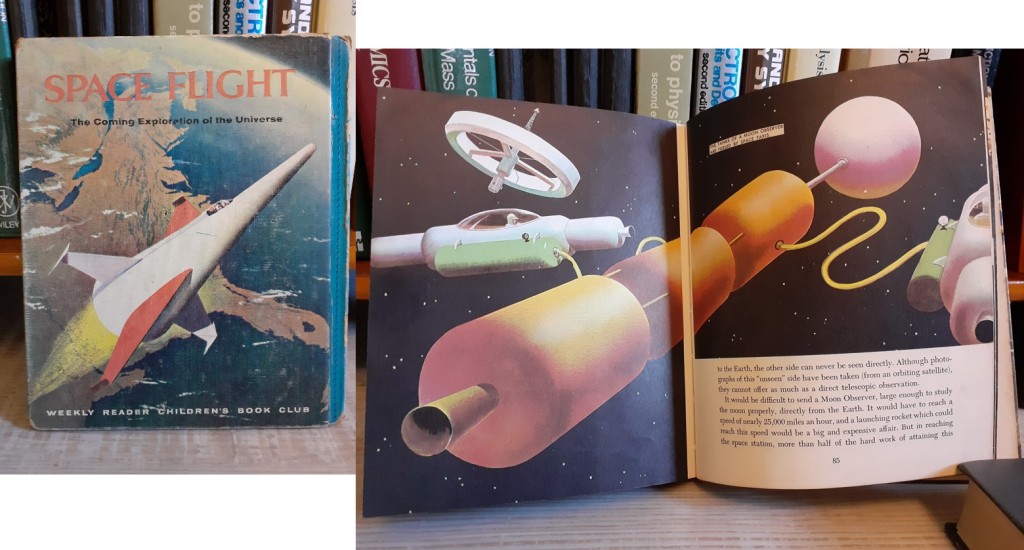
Today, NASA is investing heavily in refueling, an idea that was once verboten but is now in vogue again. This may be thanks to a massive Starship passing as just a lander. Starship “refilling,” the wording better reflecting that both fuel and oxidizer are topped-off, plans to trade the propellant not in one ship for the payload not placed on another. The imagery of what’s planned goes well alongside the artwork of days past, reminiscent of tank after tank all in a row. As bookends on a journey, refueling in space has come a long way. Yet, there is actual hardware that can tell a lot about in-space refueling. Between the art of Solonevich and the plans of SpaceX, there was a stage called the Saturn S-IVB.
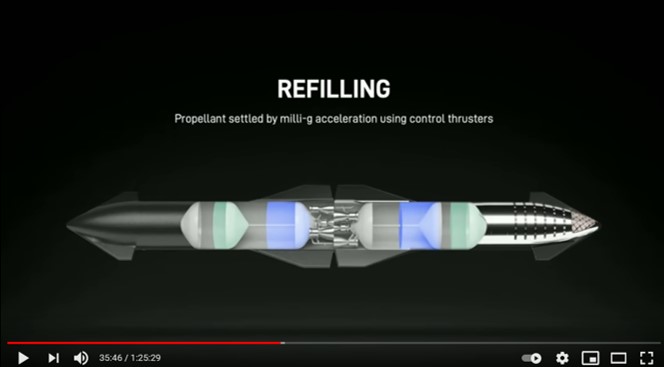
Below, the Saturn S-IVB, actually a 3rd stage, not a 4th, is afloat against a cloudy sky with a lunar lander attached. I see this and hear “Mr. Sulu, assume standard orbit” in the background. At first glance, the picture would appear to be a stage awaiting the Apollo crew spacecraft, which is turning around to mate with the lunar lander and access port to access port. This is the case. It’s not for a lunar mission but for the Apollo 9 test flight of everything, from stage to lander to spacecraft, with even some extra-vehicular activity. The scale is telling, a stage large enough to get landers and spacecraft (and adapters) along the way to the Moon had it fired up its engine. Notably, when the lunar missions did leave Earth’s orbit, the stage was not entirely full. A lot of propellant had been burned to get it into its proper orbit. Imagine if such a stage had been refilled. Now imagine again how an empty or near-empty stage of nearly the same scale and a lander attached could be launched without a massive Saturn rocket.
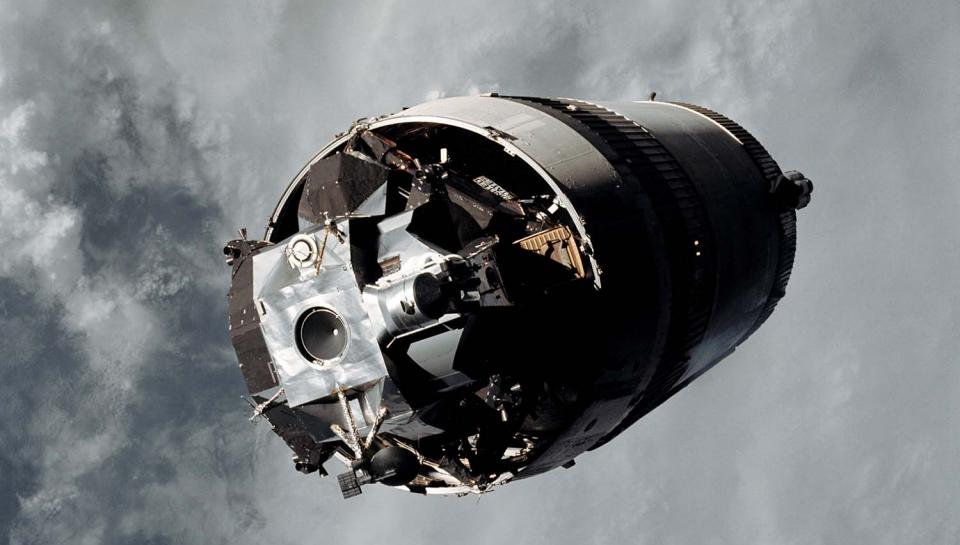
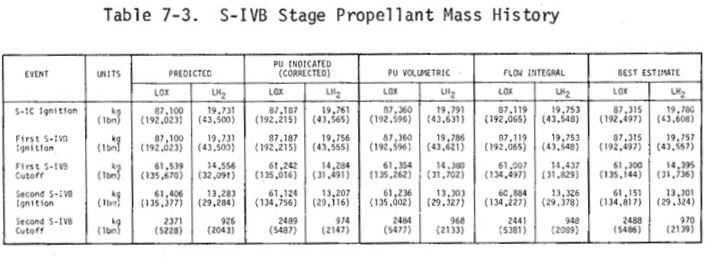
Starships may set the stage for refueling, but refueling can excel at much smaller scales. While we have a very commercial US launch capability today in the SpaceX Falcon 9, we also have a very competitive launch capability on the smaller end in Rocket Lab’s Electron rocket. Others will follow. A single scale to meet all needs would also seem unlikely for deep space. Might refilling also find a helpful scale below the Starships? It turns out 100,000kg of propellant, the scale of the Saturn S-IVB, is a minimal scale for crewed lunar missions. Between the time of the childhood artwork and the recent plans for massive rockets, there was real hardware that points to possibilities.
The numbers, 10 tons here, 100 tons there…
To say refilling a stage in Earth orbit has many moving parts would be an understatement. All the parts begin their story by scaling a stage. It’s no coincidence the other current development, the NASA Exploration Upper Stage, is close in scale to the Saturn S-IVB. Orbital mechanics and physics are a constant. If the smallish Apollo lunar lander was about 17,000kg fully loaded, and an empty stage to be refilled later is around 12,000kg, there is now an extremely affordable launch capability to place that tonnage in low Earth orbit. Better yet, in a growing economic ecosystem, there will be other capable launchers to follow. Say a Falcon Heavy can place 63,800kg into low Earth orbit, then add the caveats. If we wish to use it in fully reusable mode, it’s more like a 34,000kg capability. If we want to place the ship to await tankers up higher, at 400km, and say at 51.6 degrees inclination (like the International Space Station), we must work within about a 30,000kg launch capability. That empty stage and a small lander add up – but with too little margin.
However, there are plenty more puts and takes. A stage doesn’t have to be as large as the Saturn S-IVB. It’s already been placed about where it should be. More so, expending a center Falcon booster and reusing only the side boosters, still a great cost advantage, quickly jumps total capability for that initial mass put at 400km/51.6° to around 51,300kg. Now that stage can get bigger again, and the lander and other elements like the spacecraft service module can scale up, too. Some initial propellant might be added, just for starters. Adapters, maneuvering, losses and other factors regain ample margin to spare.
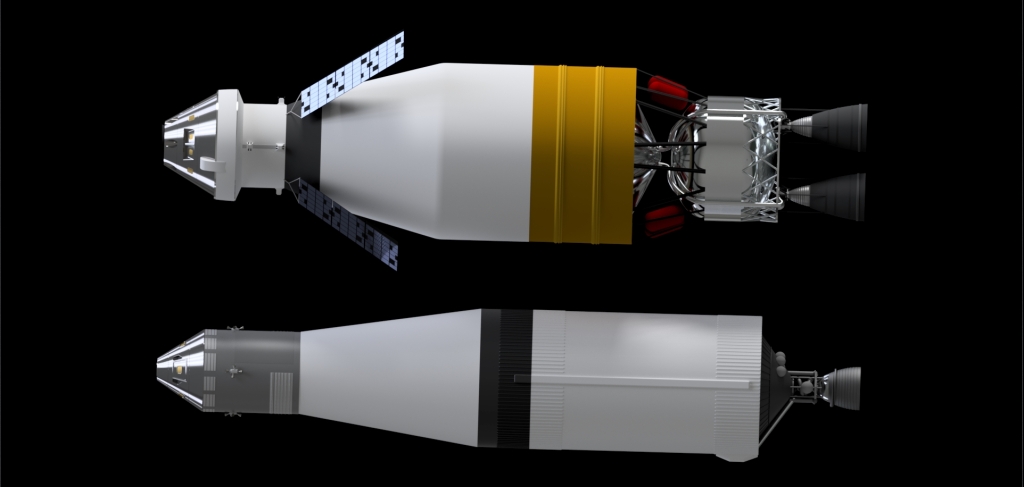
Beyond the numbers
From these masses and the physics, there come possibilities in the cost, safety, and reliability improvements from NASA’s partnerships, buying launches, and propellant as competitive commercial services. This is so even when NASA is the only customer in the near term. It takes a while to get to Inspiration4 using commercial crew spacecraft developed for NASA, but well before and regardless, there is every indication NASA reaps enormous benefits. Time will tell how refilling will play a role in exploring our solar system – but it appears the stage is set so a ship in space filling up on propellant before its long journey is no longer just the stuff of childhood stories.
Also see:
- NASA Said “NO” to Jeff Bezos Cheaper SLS Mega Rocket. Bill D’Zio, March 30, 2020 at medium.com
3 thoughts on “What’s old is new again – more on refueling in space”